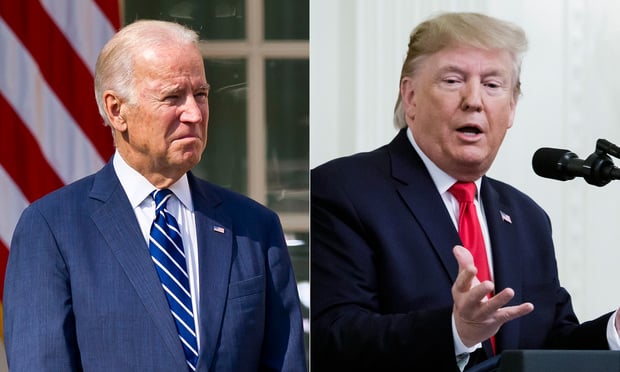Senate Republicans’ plan to replace Obamacare will increase thenumber of uninsured Americans by 22 million, raise costs for manypeople currently enrolled in private insurance and slash Medicaidby billions of dollars, according to an estimate by theCongressional Budget Office.
|Related: 5 things for agents to know about the Senate healthbill
|The Senate bill, called the Better Care Reconciliation Act,would reduce the deficit by $321 billion over a decade, accordingto the CBO, which provides nonpartisan analysis of legislation.That compares with a bill that passed the House of Representativesin May, which CBO at the time projected would result in 23 millionfewer people with insurance and cut the deficit by $119billion.
|The findings set the stage for a short yet intense debate amongRepublicans, with Majority Leader Mitch McConnell having to winover 50 of his 52 Republican senators to pass the bill this week.Their efforts may be complicated not only by the CBO’s projectionthat millions of people will lose insurance, but also by estimatesthat many Americans will face out-of-pocket costs and insurancepremiums far higher than they are now.
|There were already signs of GOP discontent in the hours afterthe score was released, from both the conservative and moderateside of the party.
|“At this point, we need to do significantly more to lowerpremiums,” said Senator Ted Cruz of Texas, a conservative. SenatorRand Paul of Kentucky said he would vote against allowing debate tostart on the legislation. “It’s a terrible bill,” he said inWashington Monday.
|Related: GOP leaders issue revised GOP health bill as theypress for vote
|“It’s obviously not positive,” said Senator Susan Collins ofMaine, a moderate who has expressed concerns about thelegislation’s cuts.
|Medicaid cuts
The biggest increase in the uninsured would come from the bill’srollback of Medicaid, the state-federal program that covers thepoor. The GOP bill cuts spending on Medicaid by $772 billion over adecade, which would result in 15 million fewer people enrolled inthe program in 2026 than under current law. Another 7 millionwouldn’t have coverage in the individual insurance market.
|Related: Two studies look at Medicaid expansion pros,cons
|The bill, should it become law, would be a negative forhospitals and doctors. There would be fewer insured patients to payfor services, and those with less-generous insurance would facehigher out-of-pocket costs that some might not be able to pay. TheAmerican Medical Association, the largest trade group for U.S.doctors, said earlier on Monday that the proposal would makeit harder for people to afford care, joining the American HospitalAssociation in opposing the bill.
|Insurers have been mixed -- America’s Health Insurance Plans,the industry’s Washington lobbying group, last week called theMedicaid cuts “too much, too fast.” One of its biggest members,Anthem Inc., said Monday that the bill would improve parts of theindividual market for coverage.
|The CBO estimated that the law would lower premiums in the longterm, but raise out-of-pocket costs. Premiums would rise over thenext several years and then fall, relative to current law. In 2026,average premiums would be about 20 percent lower than they would beunder Obamacare. That’s in part because coverage would be skimpier,and people would face higher deductibles and othercost-sharing.
|Premium example
For example, a 64-year-old making $56,800 in 2026 would have a$6,800 annual premium after an $8,500 subsidy for a silver-levelplan covering 70 percent of their expected health costs underexisting law. That person would face a $20,500 premium for the samecoverage under the Senate bill and get no subsidy.
|CBO estimated that the individual health insurance markets wouldbe stable in most parts of the country under both the Senate GOPplan and under Obamacare. Under the Republican plan, though,insurers might withdraw from some rural parts of the country,because they’d have too few customers to operate profitably.
|“The reductions in subsidies would lead fewer people to decideto purchase insurance—and markets with few purchasers are lessprofitable for insurers,” CBO said.
|Higher costs
CBO also estimated that about half the population would beaffected by the GOP plan’s extensive waivers, which let stateschange what coverage insurers are required to offer. While peoplein those states would still be able to buy insurance, coverage forcertain conditions could become “extremely expensive” in somecases.
|Many of the insurance offerings under the GOP bill would comewith higher deductibles. A “bronze” plan that would be used as abenchmark in the law comes with an average $6,000 deductible. Underthe bill, payments that help low-income people lower their premiumsand other costs would also vanish. The result would be deductiblesso high that “few low-income people would purchase any plan,” theCBO said.
|“Because nongroup insurance would pay for a smaller averageshare of benefits under this legislation, most people purchasing itwould have higher out-of-pocket spending on health care than undercurrent law,” CBO said.
|More on Medicaid cuts
The scale of the Medicaid cuts and the increase in the number ofpeople without insurance may give pause to moderate senators.Nevada’s Dean Heller has already said he won’t vote for the currentversion of the bill.
|“It certainly makes me more concerned,” Senator Bill Cassidy, aLouisiana Republican, said on CNN after the score was released. “Itmakes me want to explore this more.”
|A bloc of four conservatives has also opposed the proposal, butfor different reasons: They said the bill doesn’t go far enough inundoing Obamacare.
|Under the Senate’s budget rules, the legislation must save atleast as much as the“on-budget” savings of $133 billion in theHouse-passed bill. Not including changes to Social Security, whichis technically off-budget, the Senate amendment would save $331billion. That would give McConnell $198 billion to fund specialprovisions to Senators reluctant to support the bill, while keepingthe bill withing budget guidelines.
|The Senate bill would reduce taxes on the wealthy, as well as oninsurers, drug companies, device makers and tanning salons, payingfor it with sharp cuts to the Medicaid program for the poor andwith reductions to the subsidies that help middle-class people buyinsurance on their own. The tax cuts are nearly identical to thoseproposed in the House’s Obamacare repeal bill.
|While there’s reluctance among some Republicans, Senator LindseyGraham said that it was important to try and move forward.
|“I don’t think if you took another year it would change much;Democrats aren’t going to help us,” said Graham, a SouthCaroline Republican. “The bottom line is you’re not going to get 49votes. You’re probably going to get 50, or 35.”
|Copyright 2018 Bloomberg. All rightsreserved. This material may not be published, broadcast, rewritten,or redistributed.
Complete your profile to continue reading and get FREE access to BenefitsPRO, part of your ALM digital membership.
Your access to unlimited BenefitsPRO content isn’t changing.
Once you are an ALM digital member, you’ll receive:
- Critical BenefitsPRO information including cutting edge post-reform success strategies, access to educational webcasts and videos, resources from industry leaders, and informative Newsletters.
- Exclusive discounts on ALM, BenefitsPRO magazine and BenefitsPRO.com events
- Access to other award-winning ALM websites including ThinkAdvisor.com and Law.com
Already have an account? Sign In
© 2024 ALM Global, LLC, All Rights Reserved. Request academic re-use from www.copyright.com. All other uses, submit a request to [email protected]. For more information visit Asset & Logo Licensing.








